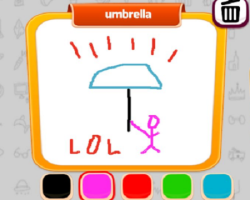Advertisement
Who is Most Likely To

Who Is Most Likely To is a social game where participants respond to various prompts by deciding which person in the group best fits a specific description. It is a verbal game built around observation, perception, and informal debate. The structure is simple: someone reads a sentence that starts with “Who is most likely to…,” and everyone quickly chooses who they think the description fits. This could be done by pointing, saying a name, or voting. There are no fixed winners or end goals, and the primary focus is on discussion and reaction.
Flexible Rules and Game Variations
There are different ways to approach the format depending on the group and setting. Some prefer to keep the game unstructured, allowing free conversation after each round, while others may introduce scoring for added competition. A point can be assigned to the person most frequently chosen, or players can track how often they are named. The rules can also be adjusted to allow for challenges, such as making the selected person explain why they agree or disagree with the group’s choice. Because of its flexibility, the game works in casual environments like house gatherings or during travel.
Types of Questions and Themes
The nature of the prompts varies widely, from realistic to imaginative. Some questions are designed to reveal habits or behaviors, while others test how well players know each other. Prompts can be funny, awkward, surprising, or even reflective. For example, a question might ask, “Who is most likely to forget their phone at home?” or “Who is most likely to try something risky without thinking it through?” The best sessions usually mix personal questions with absurd scenarios, allowing for different reactions and conversations.
Use in Group Settings
Who Is Most Likely To fits both large and small groups. It can be used as an icebreaker in unfamiliar settings or as a way to revisit old memories among close friends. Since the game depends on personal impressions, it encourages people to observe and comment on habits, quirks, and behaviors. This can lead to debates, shared laughter, or storytelling moments based on real past experiences. Because the questions are unpredictable, players often find themselves surprised by how others perceive them.
Replayability and Group Dynamics
The game remains interesting across multiple rounds because each group interprets the questions differently. A single prompt can lead to very different outcomes depending on the people involved. That makes it suitable for repeated play, especially when custom questions are added. There is also no setup or equipment needed, making it an easy game to start at any moment. The open-ended nature allows for natural conversation, while the structure provides a clear format to keep everyone involved.
Advertisement






















































































Comments